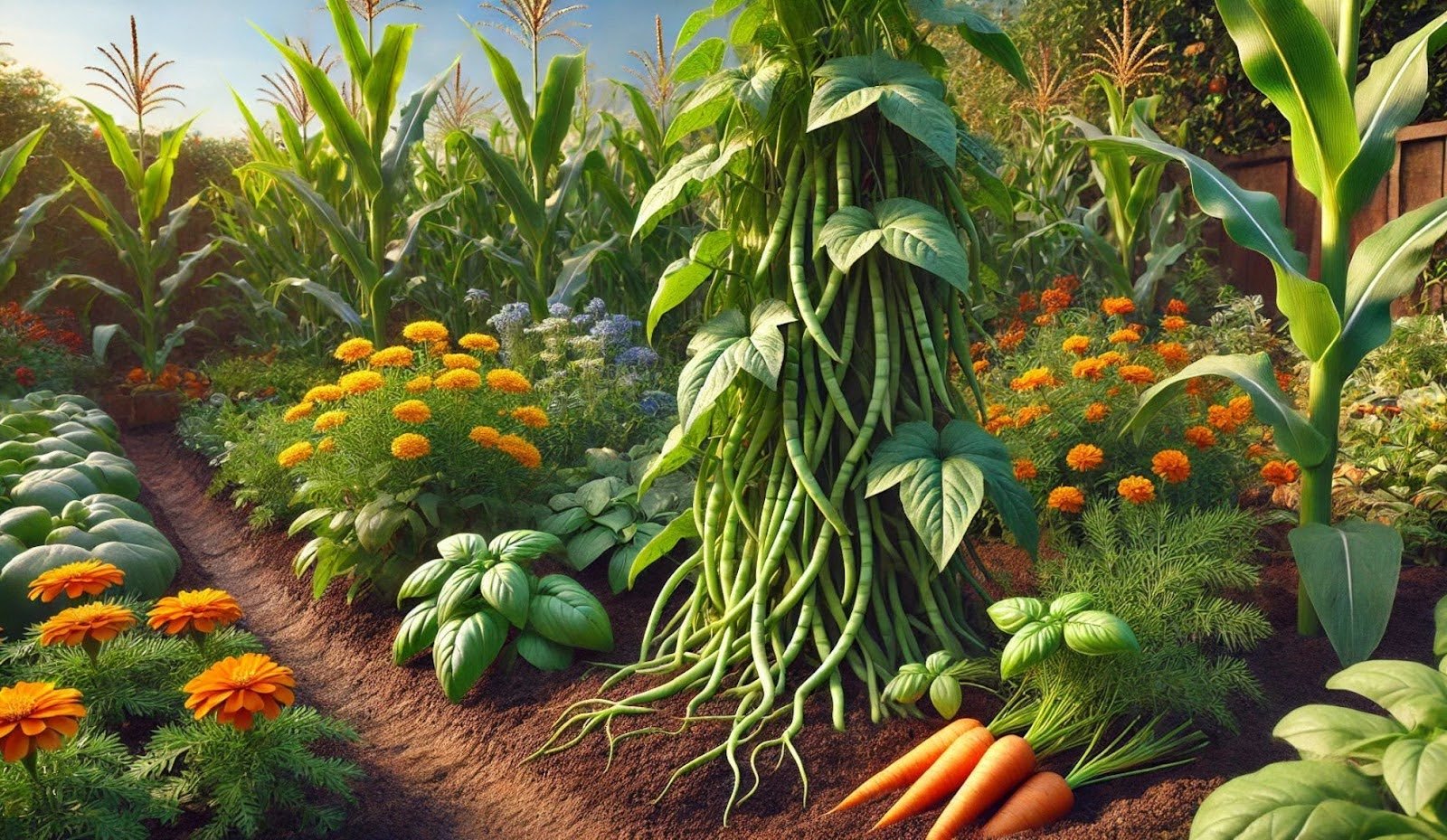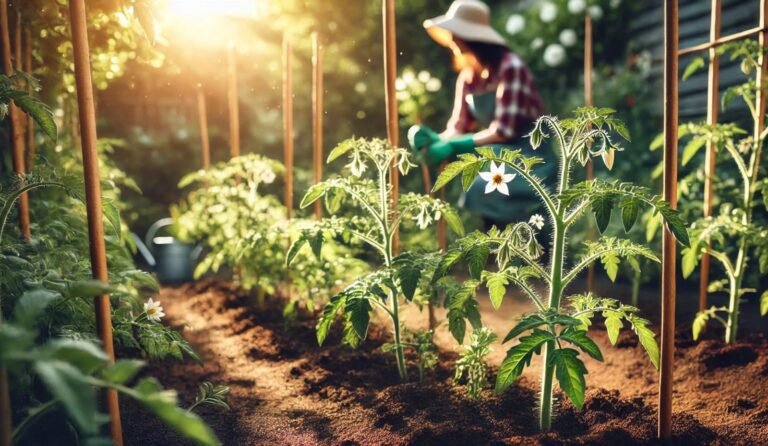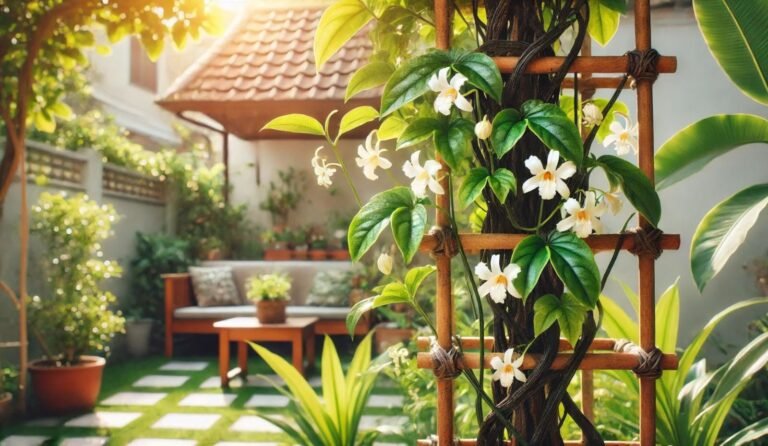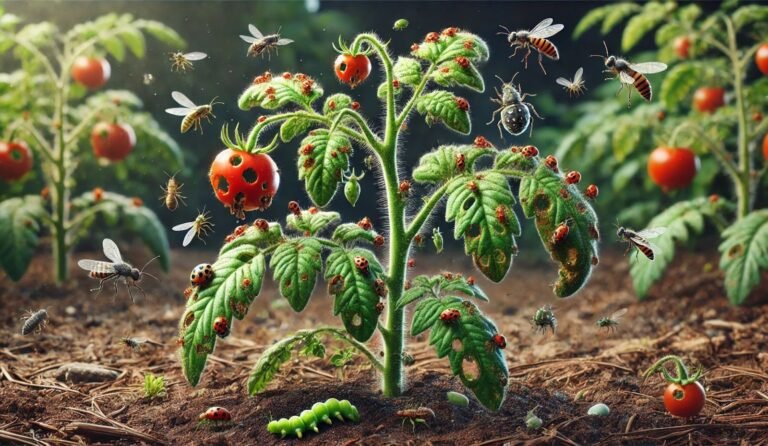Companion Plants for Green Beans to Boost Growth & Yield
Companion plants for green beans can make or break your harvest. The right plants boost growth, keep pests away, and even improve soil health—no extra effort needed! But choose the wrong ones, and you might stunt your beans before they even get started. Want to know which plants will supercharge your green bean patch? And which ones should you avoid at all costs? Let’s dive in and set your beans up for success!
What Is Companion Planting and Why Does It Matter?
Companion planting is a natural and effective way to create a thriving garden ecosystem. It involves planting different species together so they can benefit from each other in various ways. Some plants improve soil health, some deter pests, while others attract pollinators and beneficial insects.
For green beans, companion planting is particularly helpful because these plants require minimal fertilization (since they fix their own nitrogen), but they do need protection from pests like aphids, Mexican bean beetles, and spider mites. With the right companion plants, you can reduce the need for chemical pesticides and fertilizers while ensuring a productive garden.
Best Companion Plants for Green Beans
Beans are very good partners in a mixed crop due to their nitrogen-fixing properties. Beans are particularly beneficial in combination with heavy feeders, as they supply the neighboring plants with extra nitrogen.
When selecting companion plants for green beans, it’s essential to consider how they interact with the beans. Some plants enhance their growth, others protect them from pests, and some even help improve soil fertility. Let’s take a closer look at the best plants to grow with green beans.
Plants That Improve Growth and Yield
- Corn
Corn and beans are classic companions, often grown together in traditional “Three Sisters” gardens along with squash. Pole beans use the tall corn stalks as natural trellises, saving space and providing shade for the corn’s roots. In return, beans fix nitrogen into the soil, which benefits the corn. - Carrots
Carrots grow well alongside beans because their roots help loosen the soil, improving aeration and drainage. They also don’t compete for nutrients since their root system is different from the shallow roots of beans. - Cucumbers
Cucumbers and beans make excellent companions because they thrive in similar growing conditions. Both plants enjoy full sun and moist soil, and their vining nature allows them to coexist without crowding each other.
Plants That Repel Pests
- Marigolds
Marigolds are a must-have in any vegetable garden. They emit a strong scent that deters nematodes, aphids, and bean beetles. Planting marigolds around your bean plants creates a natural pest barrier. - Basil
Not only does basil repel flies and mosquitoes, but it also enhances the flavor of nearby vegetables. Growing basil alongside green beans helps keep unwanted insects away while making your garden smell amazing. - Rosemary
This aromatic herb is a powerful deterrent against bean beetles and other common pests. Planting rosemary near your green beans ensures they stay safe from insect infestations.
Plants That Fix Nitrogen and Improve Soil Health
- Peas
Like beans, peas are nitrogen-fixing plants, meaning they help replenish the soil with nitrogen. Growing them together ensures that your garden beds remain fertile and ready for future planting. - Clover
Often used as a cover crop, clover is excellent for improving soil structure and nitrogen content. Planting clover near green beans helps keep the soil healthy and reduces the need for additional fertilizers.
Plants That Attract Beneficial Insects
- Nasturtiums
These beautiful flowers do double duty in the garden. They attract pollinators like bees while also drawing aphids away from your bean plants, acting as a natural trap crop. - Dill
Dill is a fantastic herb for attracting predatory insects like ladybugs and parasitic wasps, which help control common bean pests. Plus, its feathery foliage makes a great visual addition to the garden.
Plants to Avoid Growing with Green Beans
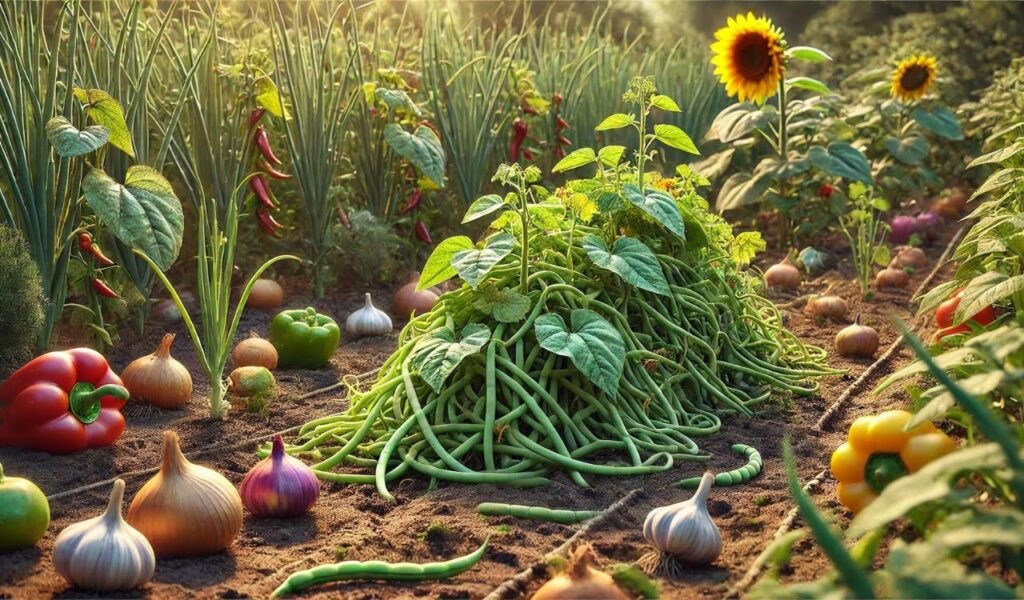
While some plants work wonders with green beans, others can hinder their growth or attract unwanted pests. Here are a few plants you should avoid planting near your green beans.
- Onions & Garlic
Members of the allium family, including onions and garlic, release chemicals into the soil that can stunt the growth of green beans. They also compete for nutrients, making them poor companions. - Peppers
Both beans and peppers require similar nutrients, leading to competition in the soil. Additionally, peppers attract some of the same pests that love to munch on green beans. - Sunflowers
While sunflowers are great pollinator attractors, they release chemicals into the soil that can inhibit the growth of nearby plants, including beans.
Savory Against Pests & Diseases
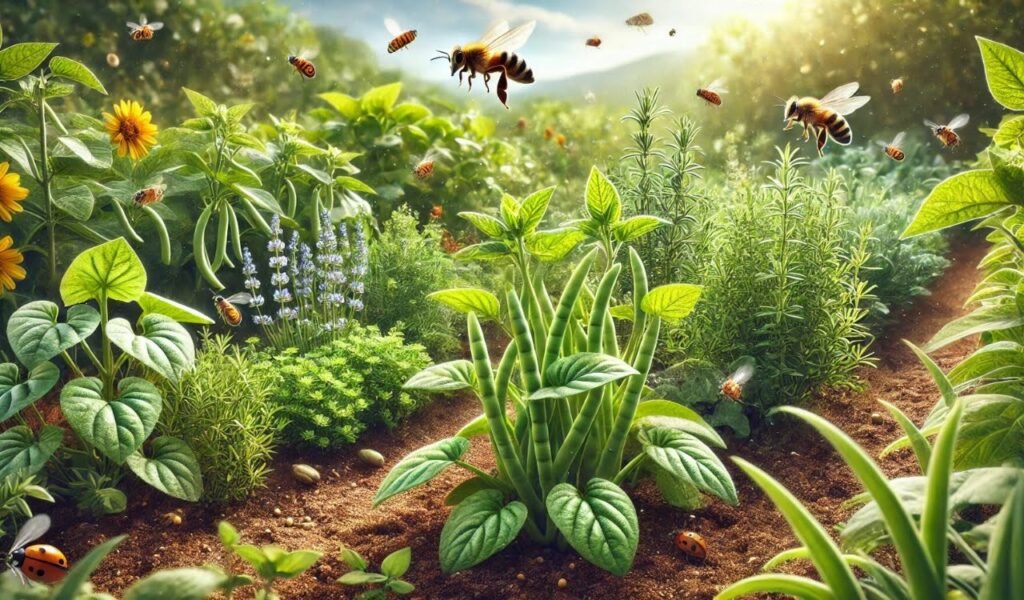
When it comes to natural pest control, savory is one of the best companion plants for green beans. This aromatic herb not only enhances the flavor of beans but also acts as a natural repellent against common pests and diseases.
How Savory Protects Green Beans
Repels Bean Beetles – Savory emits a strong scent that deters Mexican bean beetles, one of the most destructive pests for green beans.
Attracts Beneficial Insects – The small flowers of savory attract pollinators and predatory insects like ladybugs and parasitic wasps that feed on harmful pests.
Enhances Plant Immunity – The compounds found in savory may help improve the overall resilience of green beans against diseases.
Best Ways to Use Savory as a Companion Plant
Interplanting: Grow savory between rows of green beans to create a protective barrier.
Border Planting: Plant savory along the edges of your green bean garden to keep pests at bay.
Container Growing: If you’re growing green beans indoors or in small spaces, keeping a potted savory plant nearby can provide the same benefits.
Additional Benefits of Growing Savory
Improves Bean Flavor – Many gardeners swear that growing savory near green beans enhances their taste.
Doubles as a Culinary Herb – You can harvest fresh savory to season bean dishes, soups, and meats.
Low Maintenance & Drought-Tolerant – Savory is easy to grow and thrives in various conditions, making it a great addition to any garden.
By incorporating savory into your green bean garden, you’ll naturally reduce pest issues while improving the health and flavor of your plants. It’s a simple, effective, and chemical-free way to protect your crops!
Should I Fertilize Green Bean Plants?
One of the biggest advantages of growing green beans is that they don’t require much fertilization. Beans are nitrogen-fixers, meaning they take nitrogen from the air and convert it into a form that plants can use. However, a little extra care can go a long way.
- If your soil is poor, you can add organic compost before planting to give your beans a healthy start.
- Avoid high-nitrogen fertilizers, as they can cause excessive foliage growth at the expense of bean production.
- A balanced organic fertilizer (such as 10-10-10) or compost tea every few weeks can be beneficial.
How Many Green Beans Per Plant?
The yield of green beans depends on the variety you grow:
- Bush beans typically produce 20-30 beans per plant over a few weeks.
- Pole beans can yield up to 120 beans per plant since they continue producing for a longer period.
To maximize your harvest, pick beans regularly to encourage the plant to produce more.
Green Beans Companion Planting Layout & Tips
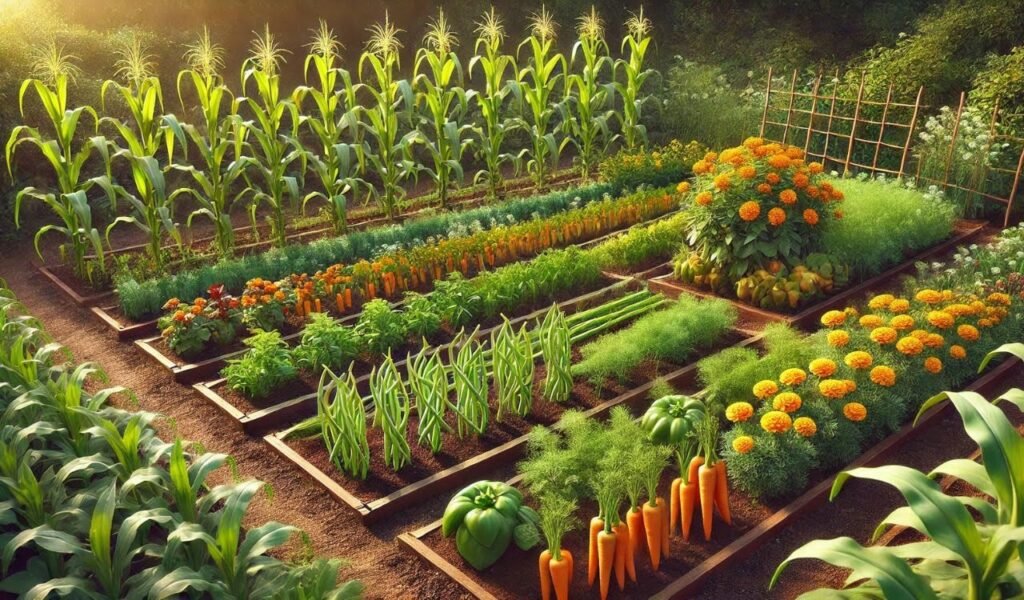
To make the most of companion planting, consider these layout ideas:
Three Sisters Method: Plant beans with corn and squash in a triangular formation. The beans climb the corn, while the squash provides ground cover to retain moisture.
Row Planting: Grow beans in rows with marigolds and basil interspersed between them to repel pests.
Raised Beds: Use raised garden beds with beans alongside carrots and dill for optimal growth.
FAQ
What are the best companion plants for green beans?
Corn, carrots, cucumbers, marigolds, basil, rosemary, peas, and dill.
What plants should not be planted with green beans?
Avoid onions, garlic, peppers, and sunflowers as they stunt growth.
How do companion plants help green beans?
They improve soil health, repel pests, attract pollinators, and boost yields.
Can I plant green beans with tomatoes?
Yes, but ensure proper spacing to avoid competition for nutrients.
Do green beans need fertilizer if planted with companion plants?
Not much! Beans fix their own nitrogen, but compost can help.
Will planting flowers near green beans attract pollinators?
Yes! Nasturtiums and marigolds attract bees and beneficial insects.
Can I grow green beans indoors with companion plants?
Yes! Herbs like basil and rosemary make great indoor companions.
Final Thoughts
Companion planting is one of the best ways to ensure your green beans thrive while reducing the need for chemical pesticides and fertilizers. By carefully selecting plants that support your beans’ growth, deter pests, and improve soil health, you can create a productive and beautiful garden. Now that you know which plants make great companions for green beans, why not experiment in your own garden? Try different combinations and see what works best for your space. Happy gardening!

